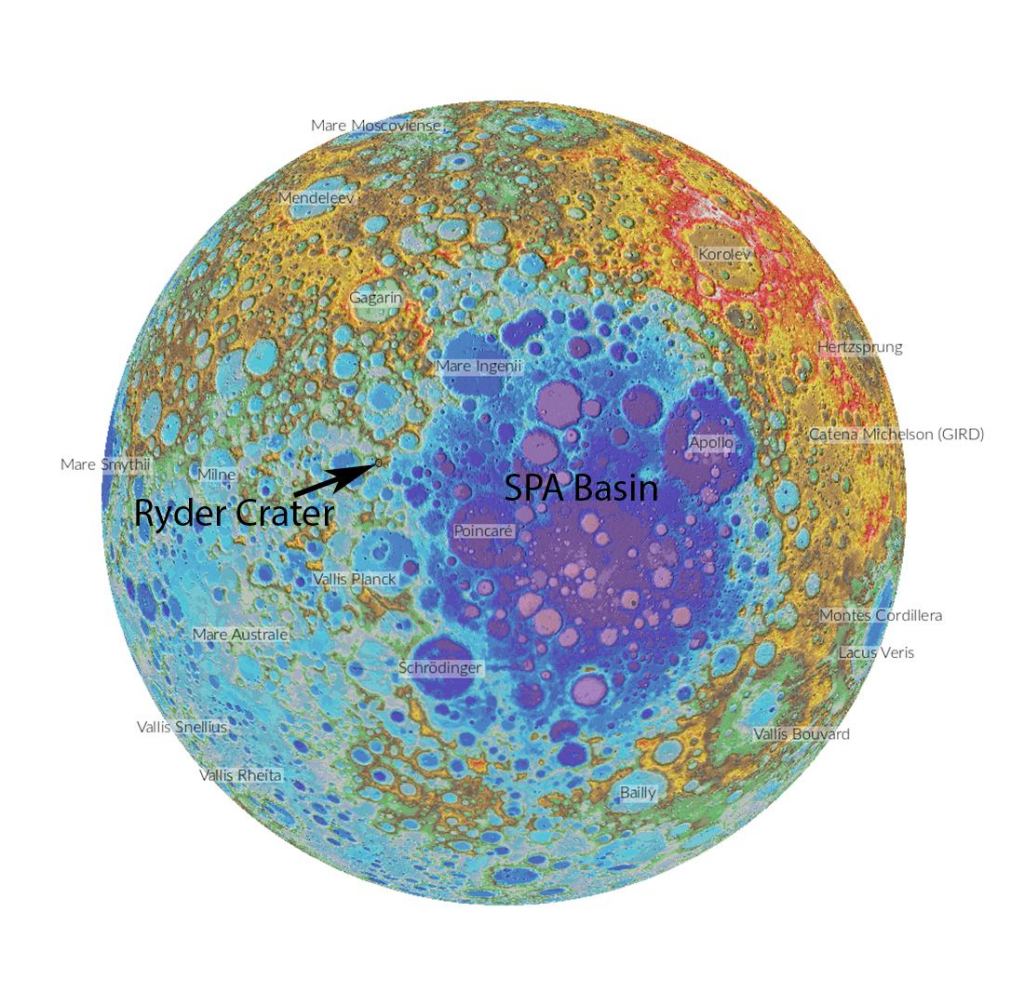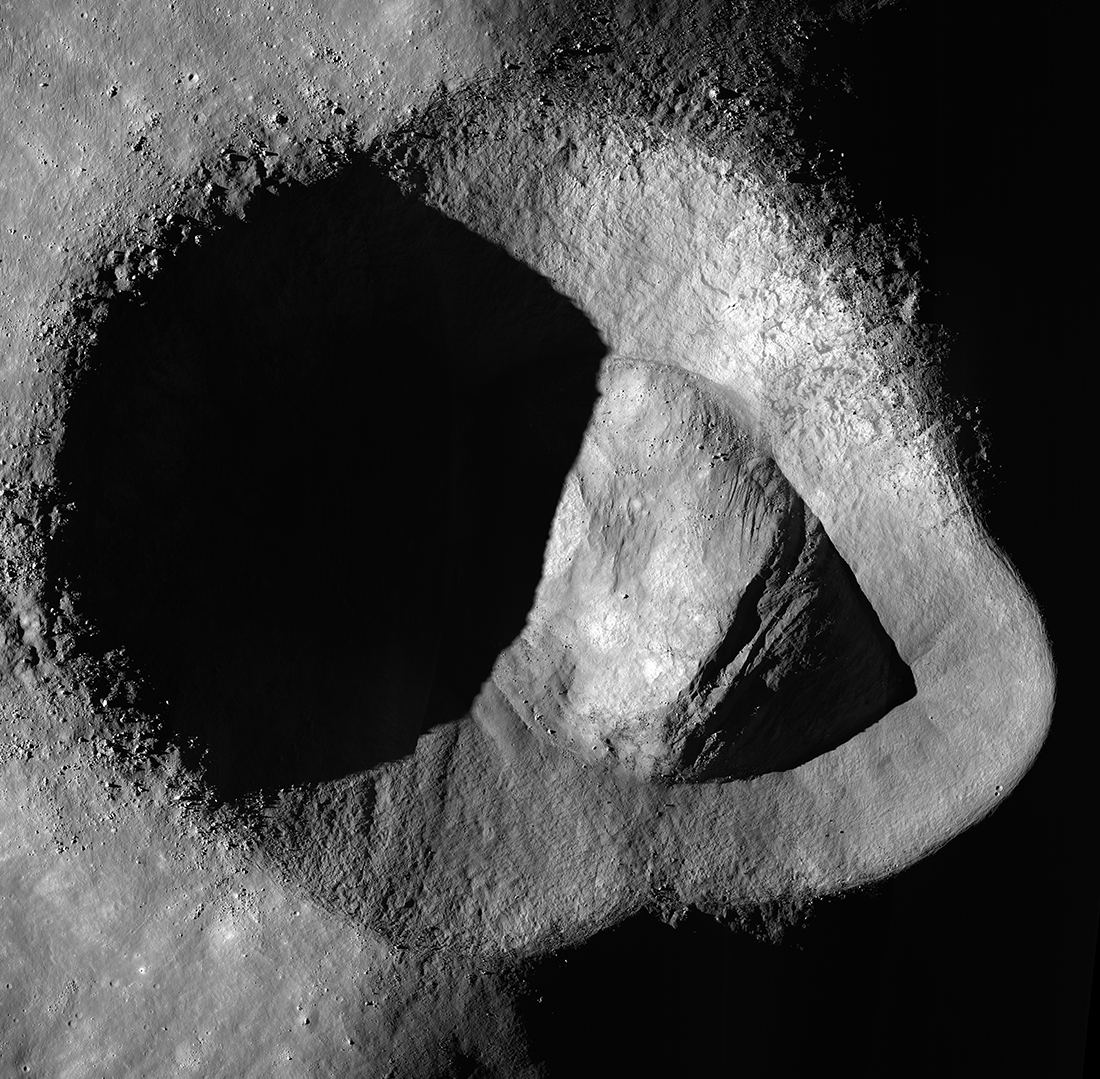This may be one of the strangest craters you’ll ever see.
Ryder crater is located near the south pole of our Moon, and it has a bizarre oblong shape (approximately 13 x 17 km in size), with a ridge cutting across the middle.
The majority of impact craters are round. How did Ryder crater end up in this odd shape?
There are a few different possibilities (and, surprise, none of them involve aliens.)
One is that Ryder was formed by two impacts. If it was two impacts, lunar scientists don’t think the impacts were very far apart in time, however. So, either two asteroids hit in quick succession, or an asteroid split in two just before impact.
The second possibility is that this distinctive landform could have formed when an impactor struck the surface at a grazing angle, perhaps less than 15° from the horizon, basically plowing the lunar regolith into this elongated shape.
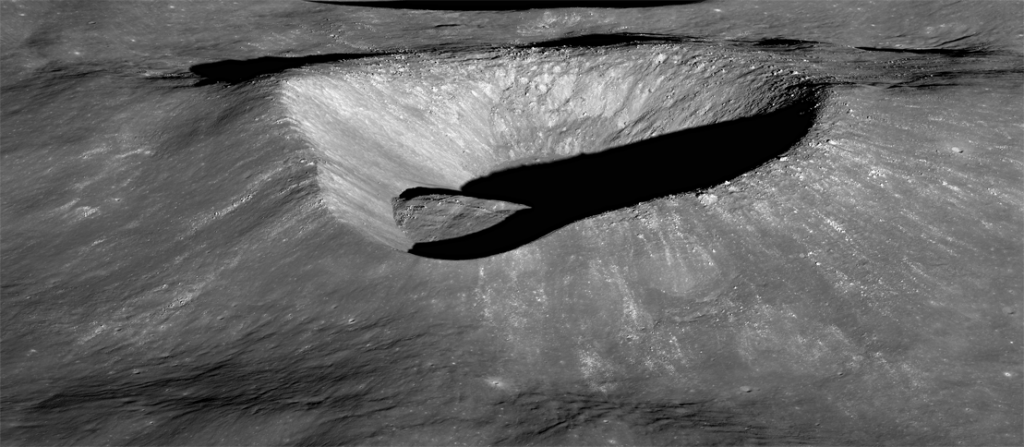
But there is also a third possibility, because there is another factor at play here: Ryder crater formed on the edge of a steep ridge, and this kind of uneven terrain is often responsible for asymmetric craters.
Scientists with the Lunar Reconnaissance Orbiter say the steep ridge where Ryder crater sits is the degraded rim of an older crater that is about 70 km across, with a vertical drop of over 3000 meters (approximately 10,000 feet) from its rim to its floor. And even this older crater may have been affected by the uneven terrain on which it formed – its eastern rim appears to have formed on an uneven area in the South Pole–Aitken (SPA) Basin, which is the largest (roughly 2,500 km in diameter) and possibly oldest (estimated age of 4.3 billion years) basin on the Moon.
If the impactor that formed Ryder crater struck the very highest point of the older crater’s rim, the final shape of Ryder crater would be strongly affected by the extra steep slope of the original surface — basically one side might have slide down the slippery slope. There still is a big change in elevation even now, as the high point of Ryder’s rim is approximately 1500 meters (5000 feet) higher than the low point of its rim. This is shown in the image below (Ryder is right in the middle, with the slope visible in this topographic view.)
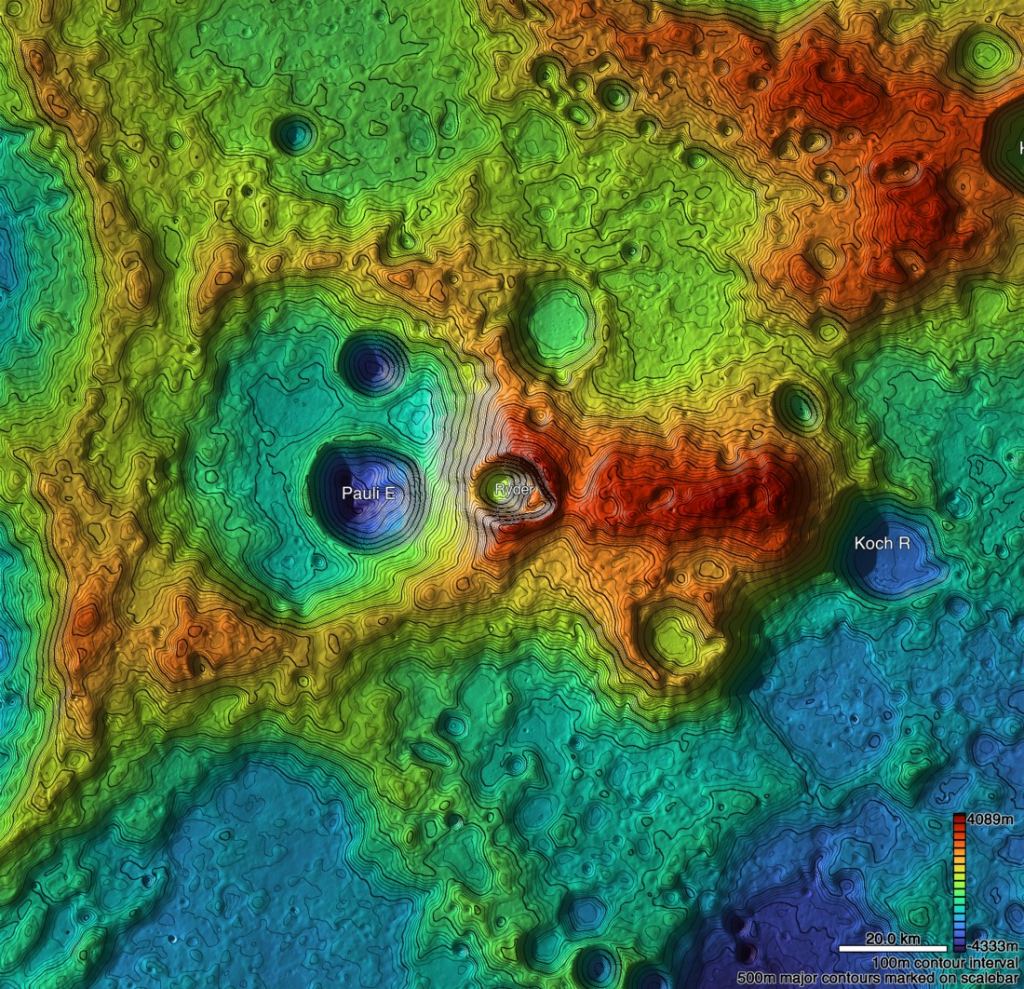
But, says the LRO team, as with most complicated geologic problems, the real answer is likely some combination of hypotheses.
“The topography of a lunar crater is initially a result of a random impact event followed by eons of relentless erosion, mostly by the cumulative effect of micro- and macro-meteorite bombardment, and seismic shaking,” wrote Mark Robinson, the principal investigator for the Lunar Reconnaissance Orbiter Camera. You can read a highly detailed and mathematical look at why craters end up with various shapes, written by Robinson here.
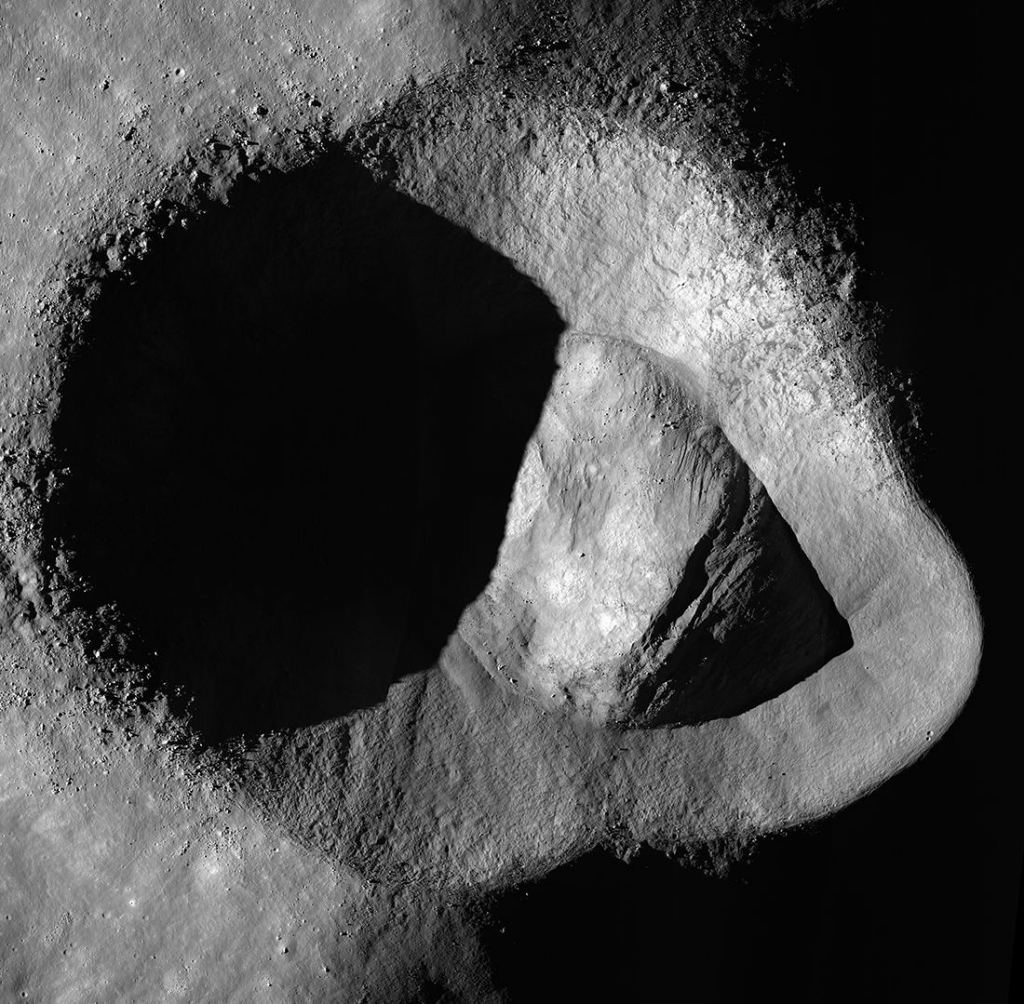
Ryder Crater was named after Graham Ryder, a lunar scientist who worked at the Lunar and Planetary Institute and the NASA Johnson Space Center, unraveling the secrets of lunar geology through detailed analyses of Apollo samples.
You can see some example of other oddly-shaped craters on the Moon below:
Messier A Crater (a double impact), along with Messier Crater, make from a low angle impact
Wiener F Crater (a tilted crater on a ridge)
More info on Ryder
